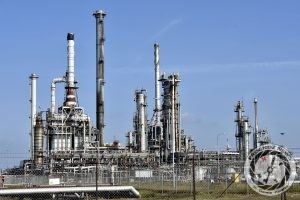Gunvor and Russia sanctions

By Matthew Parish, Associate Editor
Gunvor’s story is inseparable from the modern history of Russian hydrocarbon exports. Born as a niche trader focused on moving crude from Russian Baltic and Black Sea ports, she grew rapidly in the 2000s by mastering the logistics, pre-financing and blending that Russia’s pipeline-to-port system requires. At her peak before 2014, credible contemporary reporting put Gunvor’s share of Russia’s seaborne crude at roughly a third—an extraordinary concentration for an independent trading house and a measure of how deeply the firm was embedded in Russia’s export machine.
The firm’s co-founders were Torbjörn Törnqvist, a Swedish trader who remains chairman, and Gennady Timchenko, a Russian businessman long seen in the West as close to the Kremlin. In March 2014, as Russia annexed Crimea, the United States sanctioned Timchenko and publicly alleged that President Putin might have access to funds via Timchenko’s stake in Gunvor; Timchenko sold his holding to Törnqvist the day before the designation, and the company has since emphasised that he has no affiliation with the group. The episode marked a hinge in Gunvor’s relationship with Russian exports: the firm moved to distance itself, diversify its book and stress compliance as the centrepiece of its risk culture.
From 2014 to 2021, Gunvor broadened geographically and by commodity—gas, LNG, products—and rebuilt on a more balanced base. Financially, she remained one of the largest independent oil traders: revenues surged amid the 2021–2023 energy shock, with the company reporting volumes in the hundreds of millions of tonnes and multibillion-dollar gross profit, underscoring how volatility (rather than directional price) is the trader’s true ally.
Russia’s full-scale invasion of Ukraine in February 2022 redrew the map again. Western embargoes and price-cap regimes fragmented the market, while a “shadow fleet” of older tankers moved much of Russia’s oil outside G7/EU services. Gunvor said it stopped taking new Russian business from March 2022 and that any trading strictly complied with sanctions; investigative groups nonetheless counted sizeable volumes facilitated by Western players in the first year as contracts unwound and price-cap logistics took hold, with Gunvor among the most significant. The broader policy environment kept tightening in 2025, as the EU and UK lowered the oil price cap and expanded measures against the shadow fleet.
By 2025, Gunvor’s public posture towards Russian hydrocarbons was one of distance and caution, but the firm remained entangled with the politics around them. In early November 2025 she explored acquiring Lukoil’s foreign assets—a deal that would have reshaped her footprint—only to withdraw after the US Treasury signalled it would not license the transaction during the war. Media coverage in the United States described Washington’s scepticism in unusually sharp terms; Gunvor countered that such characterisations were false and reiterated that Timchenko exited in 2014. The withdrawal illustrated how reputational memory and sanctions policy continue to define what is feasible for any Western-facing trader with a Russian past.
Operationally sanctions on Russia (and Iran) have had second-order effects that traders like Gunvor navigate every day—amongst them record volumes of oil sitting in floating storage as barrels await compliant transport, insurance and payment channels. The firm’s chief executive noted in November 2025 that such bottlenecks are reshaping flows and damping visible gluts of Russian oil, a reminder that logistics—not headlines—decide margins.
Gunvor has also faced scrutiny beyond Russia. In 2024 she agreed to pay more than $660 million in the United States to resolve a long-running foreign bribery case tied to Petroecuador contracts, following earlier compliance issues in Africa; the settlement came with commitments to strengthen internal controls. Whatever the geography, the lesson is the same: commodity houses sit at the junction of state firms, national treasuries and private capital, and their risk is as much legal-political as it is market-price.
What, then, is the history and the present of Gunvor’s relationship with Russian exports? Historically, it was one of the chief private conduits carrying Russia’s oil to world markets—by some estimates up to about 30 per cent of seaborne crude—thanks to hard-won expertise along Russia’s export corridors. Since 2014, and decisively since 2022, it has sought to recast itself as a global, sanctions-compliant house with minimal exposure to Russian flows. Yet the past is sticky. Attempts to buy assets from a sanctioned Russian major in 2025 ran aground on Washington’s policy and perceptions. In practical terms, Gunvor today exists alongside Russian exports rather than within them: it trades in a world whose routes, prices and arbitrages are still profoundly shaped by how Russian barrels move—or fail to move—under sanctions. That enduring structural linkage is likely to persist until the war ends and the sanctions architecture changes.
If one wishes to understand Gunvor’s trajectory, it is best read as a barometer of the West’s evolving tolerance for commercial proximity to Russian hydrocarbons: expansive in the 2000s; constrained and reputationally fraught since 2014; and, after 2022, circumscribed by a hard perimeter of compliance where even seemingly indirect deals can die on the vine. Gunvor’s precise relationship with Russian exports remains largely hidden; the company has sought to diversify; but suspicions remain of close relationships with Russia’s internationally controversial exports of hydrocarbons.
8 Views




